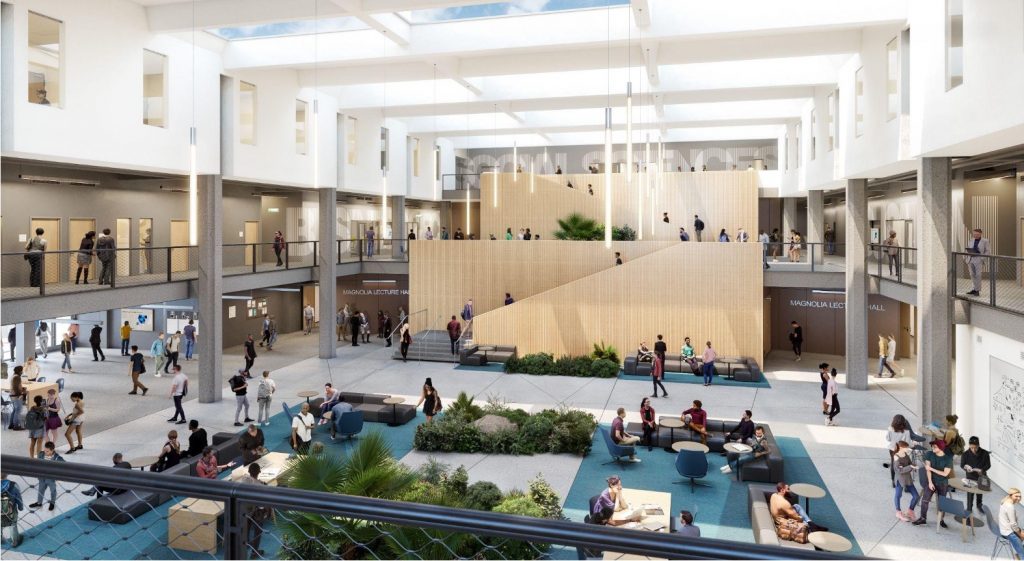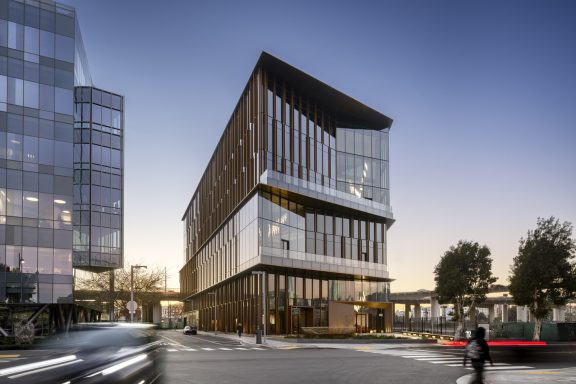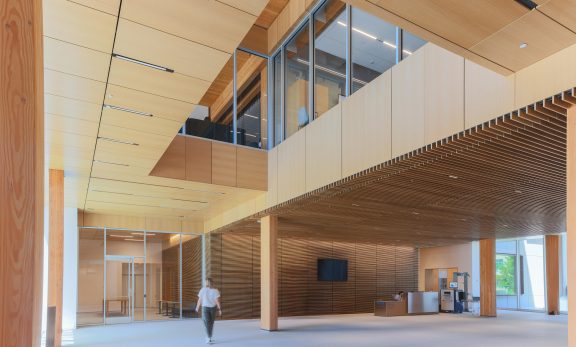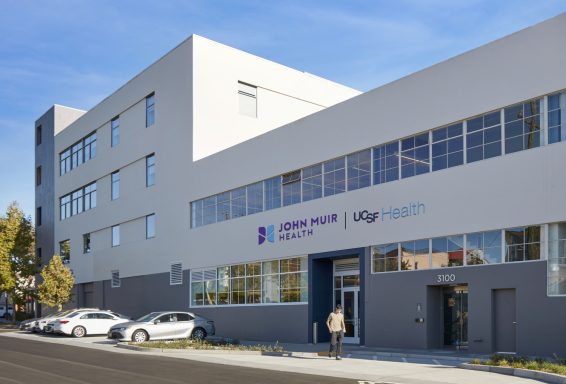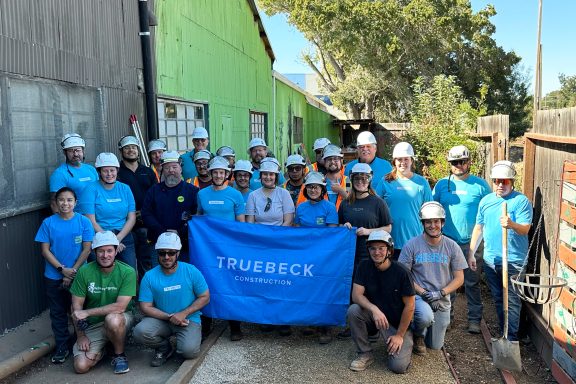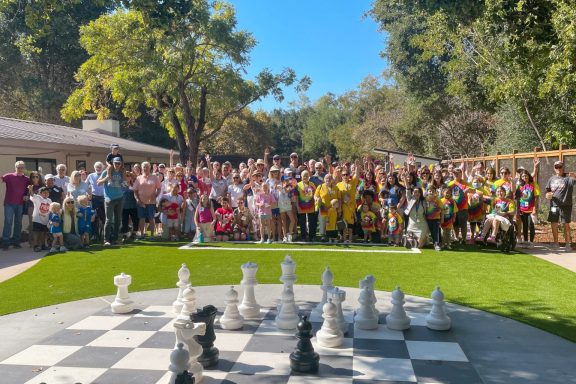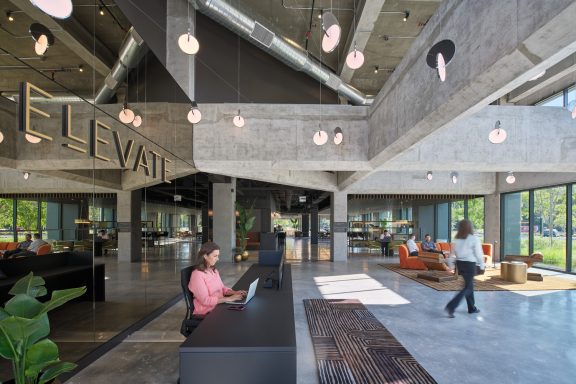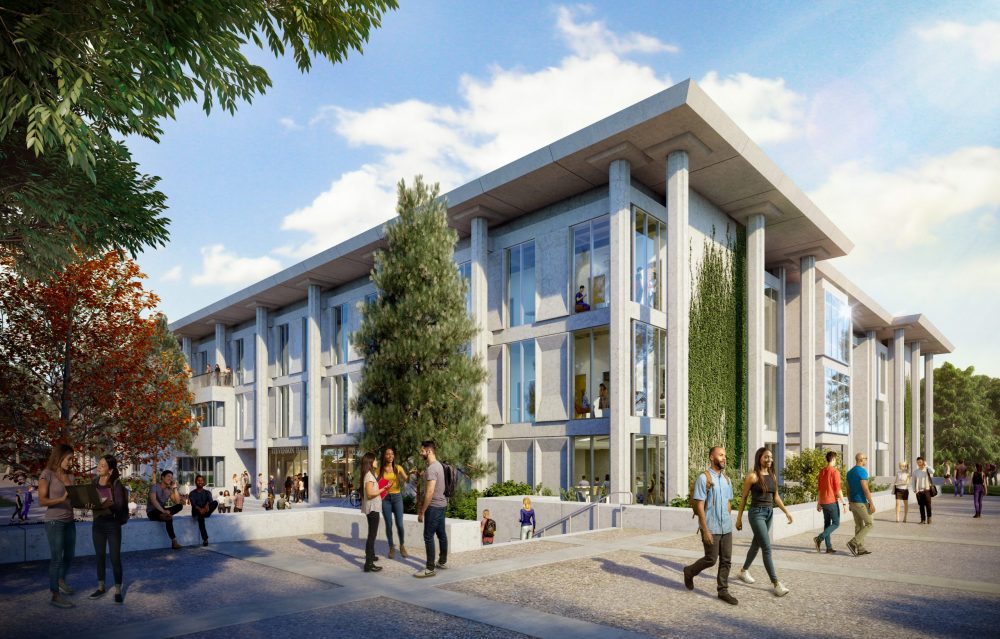
- Press
Sonoma State’s Stevenson Hall: Together, Delivering on a Promise
How does a delivery method impact project team performance?
For the Stevenson Hall project at CSU Sonoma, delivery method is the difference-maker that will provide the most value, make the building operate more efficiently, and give the best experience for building occupants.
The 140,000sf project includes an addition and a full renovation of the 1967 building. A significant seismic retrofit dictated the schedule, but the building also needed a full systems replacement, significant IT infrastructure upgrades to accommodate current and future classroom needs, 200 new offices/classrooms/conference rooms, a 250-person lecture hall, and hazardous asbestos abatement and removal. CSU Sonoma also wanted to improve environmental quality with water and energy reduction to reach a goal of LEED Gold. As the nucleus for the campus and home to three different colleges, improvements to the dark concrete building to increase light for occupants and increasing the overall seat count for classes were critical to the success of the project.
How is collaborative design-build different from traditional design-build delivery?
While you may have heard of design-build, the CSU system has created and implemented a new hybrid collaborative design-build (CDB) delivery method. CDB is a combination of CM at risk (CMAR) and design-build (DB) and consists of two phases.
The team’s overarching goal for the campus’ largest academic building is to maximize the project with the allocated budget. At completion, any project savings from the established guaranteed maximum price (GMP) are returned to the University.
Phase 1 Agreement
In the first phase, CSU Sonoma, Truebeck, and EHDD collaborated to develop a set of design-build documents and a GMP based on those documents. This collaboration on design and agreement on cost enabled honest conversations about design decisions and how it would ultimately affect constructability, project costs, and schedule––highlighting the significant advantage of the CDB delivery method.
The CDB team led an exhaustive discovery phase, surveying faculty, staff, students, and building management—what was important to those stakeholders and how can we design and build the best building for them?––to eventually deciding on which strategies to implement for the project.
Truebeck has offered varying cost analysis metrics and options to keep the budget and schedule on track. Truebeck and EHDD landed on a solution to accommodate more students and let in more light by enclosing what was an exterior courtyard into an interior light-filled atrium that will house both lecture and informal meeting spaces. Based on Truebeck’s cost analysis efforts, what was originally designed as an entirely open roof skylight, quickly pivoted to an atrium with large skylights that could also support mechanical equipment––still delivering on the criteria for added light, while also providing a cost savings alternative.
The team also decided to peel away 60% of the concrete façade and replace it with extensive windows and a high-performance envelope to improve building performance.
Building 200 offices for various departments on campus provided a new challenge. What office set-up would work for varying department staff—does one size fit all? Truebeck Project Executive, Grant Ricks, suggested a full-scale mock-up be built so faculty could touch and feel out the office space, and provided them with a survey after testing the space to gather feedback for any necessary modifications.
Phase 2 Agreement
The second phase signs the team up for the completion of design and construction. The collective buy-in on project collaboration adds significant value at this stage. The team cannot go over the budget—how the team decides on materials takes each firm bringing their best ideas to meet program requirements and ensuring value is added to the project.
“Renovations are a great fit for collaborative design-build delivery,” says Ricks. “It forces early engagement by the contractor and allows us to influence the job immediately. Too many details are hard to change later, so it allows the project to save money and run more efficiently by making durable decisions early on.”
A large part of decision-making is centered around the seismic retrofit of the building––once the budget was determined for the seismic retrofit, the rest was delegated to other portions of the project. CSU Sonoma wanted to preserve as much of the existing structure as possible to save money. Truebeck’s Construction Technology & Innovation (CTI) team performed BIM services and laser scanning to provide a visualization of hidden scope and how MEP systems would be integrated with seismic requirements in the design, which helped detect and remedy any clashes early and prevent expensive rework in the built environment. The ability to eliminate conflicts by integrating the design with the laser scan of existing building conditions also saved time off the schedule––a value-add for project success.
With COVID-19’s adverse impact on procuring equipment and materials felt industry-wide, our CDB delivery enabled us to lock in prices earlier than if it had been a traditional delivery method. Truebeck priced out similar products and established what lead times would be during phase one and early phase two, which allowed us to start buy-out sooner than traditional delivery. And as a result of our CDB delivery, we have stayed ahead of any schedule impacts and avoided delays from the outset and have been able to fast-track various materials in the process.
What type of projects are perfect for design-build or collaborative design-build?
Public projects are primed for DB or CDB delivery method. Often public groups have established program criteria, but don’t have the knowledge or experience of how to execute. Our CDB team provided ideas to meet the criteria and having an early partnership between Truebeck, CSU Sonoma, and EHDD throughout design ensured pricing was tracked throughout design and value-added ideas met program criteria and will be constructable when it’s time to build. Among added benefits, CDB holds the entire project team accountable to meet the budget and improved both the structural planning and MEP design, since the right people were in the room thinking about how systems will run and how seismic retrofitting would be incorporated into the design.
Truebeck’s successful delivery of Stevenson Hall, which is set to open its new and improved doors in November 2022, has a direct correlation to our collaborative design-build delivery approach, which fosters early and often informed decision-making by all project stakeholders.
